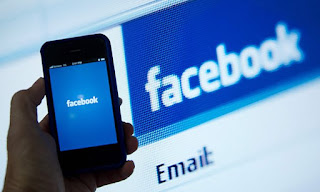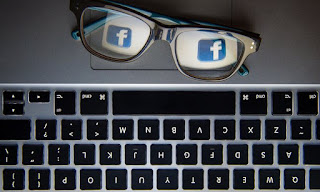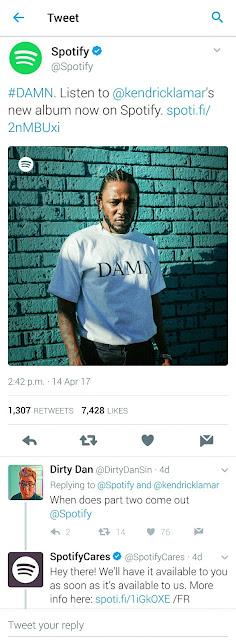MEST3 Independent case study: New/Digital Media
The basics
Your chosen industry:
Music
Your chosen case study:
The impact the growth of Spotify is having on the music industry
Audience
1)
New and digital media has meant that audiences can now gain access to music whether it's a single or an album 'in an instant.' Digital has taken over, allowing audiences to access music on a variety of devices with just a few taps being required unlike their physical counterpart.
2)
Rather than use things like a CD or record player like in the past, audiences now use their internet-connected devices to go on a streaming service like Spotify and listen to their collection of music there. This gives them the opportunity to access it on multiple devices that they own.
3)
With how the amount of people using streaming services like Spotify is constantly on the increase shown with h
4)
Services like Spotify have made it so that it's a lot easier not only to access, but to also gain new access to music that perhaps the listener wouldn't have paid attention to before. Things like curated playlists make way for things like this, creating a set of songs for the audience to listen to based on their previous listens. As well as this, people get to see what music is the most popular around the world easily whether it's based on genre or nation.
5)
6)
Diversion: with the ease involved in accessing music as a result of the emergence of services like Spotify, a greater sense of this can be said to derived by audiences as they are able to listen to virtually whatever music they want to
Personal Relationships: N/A
Personal Identity: N/A
Surveillance:
7)
Distribution of active Spotify users in the United States as of April 2015, by age:
13 - 18 years: 21%
18 - 24 years: 26%
25 - 29 years: 15%
30 - 34 years: 11%
35 - 44 years: 14%
45 - 54 years: 9%
55 - 64 years: 4%
65 years and older: 2%
Institution
1)
In the music industry, new and digital media has had an impact on ownership and control in the sense that it brings about less need for an artist to be signed to a record label. While in the past artists would need to get signed to a label in order to succeed within an industry, services like Spotify (and also Apple Music) make it the case artists actually own their content and have autonomy in the way in which they handle business.
2)
3)
New and digital media can be said to have changed the way institutions/artists produce music
4)
5)
UGC
1)
User-generated content on Spotify could be said to be found with the playlists feature that it has. Users are able to create playlists which are a collection of different songs and make them public so that others can also listen to them. Users can search for them based on moods, events, activities etc.
2)
UGC can be said to have changed things for audiences since what we now see is audiences taking more of an 'active role' in curating and discovering new music. By being able to put together our own playlists and allow others to listen to them in what could be looked as one-to-many/many-to-many communication, audiences become more active in their position.
Social media
1)
It tends to be the case that Spotify use social media to promote upcoming or newly released projects from artists.
2)
With Kendrick Lamar's album dropping on the 14th of April, we can see that Spotify can tend to use its social media presence to help promote some of the products that become available on it. This helps in keeping customers informed on what's new in terms of music and as we can see below it also gives them a chance to address possible questions that they have regarding the releases.
3)
With this said, it appears that social media acts as a great opportunity for the industry as it assists in the promotion of projects by artists which are of course, gonna bring in revenue whether you're talking about through advertisements during songs or paid subscriptions.
Statistics
1)
- 'The
top 1 per cent of artists the likes of Rihanna and Adele accounted for 77
per cent of recorded music income in 2013'
- 'Most
digital music services have catalogues of more than 20m tracks are not
listened to.'
- 'The
music rights organisation PRS for Music reported this year that CD and DVD
revenues fell by £8.7 million in 2009, but digital revenues grew by £12.8
million.'
- As
of December 2014, 75% of Spotify's 60 million users worldwide (up 20
million in a month!) were using the free tier, with just 25% paying the
subscription of £9.99 per month. Spotify's user base has doubled since
2013 but the proportion of users on the paid tier - 25% - looks to have
stayed roughly the same
- As
Spotify explains, the free tier that 75% of users are experiencing
contains adverts, all of which advertisers have paid to place there. This
revenue all goes into Spotify’s coffers, as do the subscription fees for
the paid tier, and it pays 70% of the overall revenue they collect to
rights holders – in other words, to the artists
- According
to its figures, the amount of royalties that Spotify pays to artists
doubled from 2013 to 2014, from half a billion to a cool billion US
dollars.
- It’s
not as simple as that though. As reported by The Trichordist’s blog
(‘Artists For An Ethical and Sustainable Internet’), 80% of the revenue
Spotify pays out comes from the 40% of streams made via the paid tier. In
terms of collecting royalties for artists, the free tier is still very
much the ‘gateway drug’ of the whole platform.
- It
was reported by TechCrunch, however, back in 2009, that the major labels
had received an 18% equity share in Spotify, and were receiving more
favourable terms than indie labels.
- Neilsen SoundScan’s global figures reveal that 70% of the music consumed in the first half of 2014 was streamed or downloaded – with streaming up a staggering 52% from the previous year
- With the news that 50 million songs
- were streamed in January 2015 (double
- the previous January’s), and that from
- February 2015, the UK album chart (as
- well as the singles chart) now factors
- in streams, the business models of
- platforms like Spotify, and indeed
- YouTube, will be incredibly important –
- and increasingly under scrutiny – as the
- landscape changes permanently and
- streaming becomes the norm. Whether
- all artists and all labels – majors and
- indies – get fairly recompensed is a
- question that lingers.
2)
3)
Theories
1)
- "Pareto's Law" (Lin & Webster 2002) - Pareto's would no doubt be able to be applied to the case study since at some points we're presented with how it's only the top artists that end up getting listened to. Statistics such as how the top 1% of artists such as Rihanna and Adele accounted for 77% of recorded music income in 2013 and also how most digital services have catalogues of more than 20 million tracks that are not listened to
- Two-step flow model - this could arguably be referred to since in linking with the theory above, we see how the power of opinion leaders can make it so that they remain the most popular artists regardless of the platform
Issues/debates
1)
- Ownership and control - this can be viewed as being relevant to the case study as when talking about new and digital media in the music industry, autonomy is an issue that comes up frequently in terms of the control that artists maintain over their content
- Media technology and the digital revolution - this can be viewed as being relevant to case study as we are seeing how developments in new and digital media are affecting the music industry. Spotify is a streaming service available on internet-connected devices. 20 years back things like this simply weren't available so its presence has an impact in a wide range of ways
Wider examples and secondary texts
1)
As Media Magazine 53 pointed out, other services that reflect the developments in new and digital media within the music industry are Apple Music, Tidal and Pandora to name a few. Pandora is definitely something to have a look into is it's not an on-demand service like Spotify is but rather an 'internet radio.'




